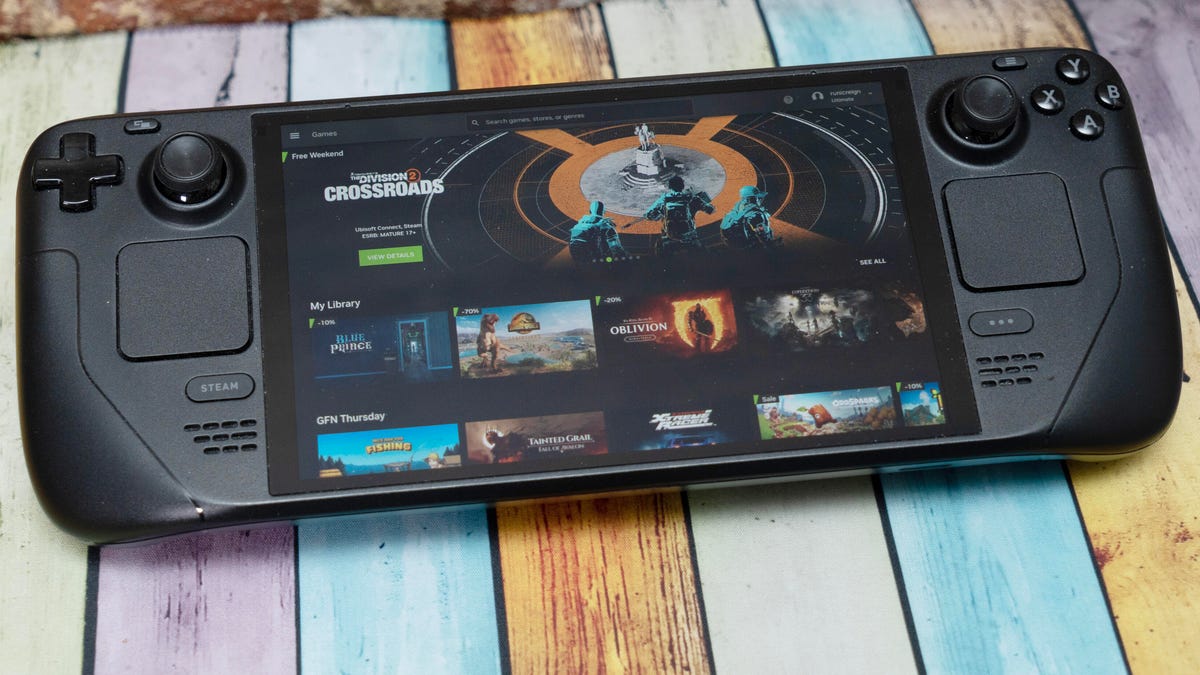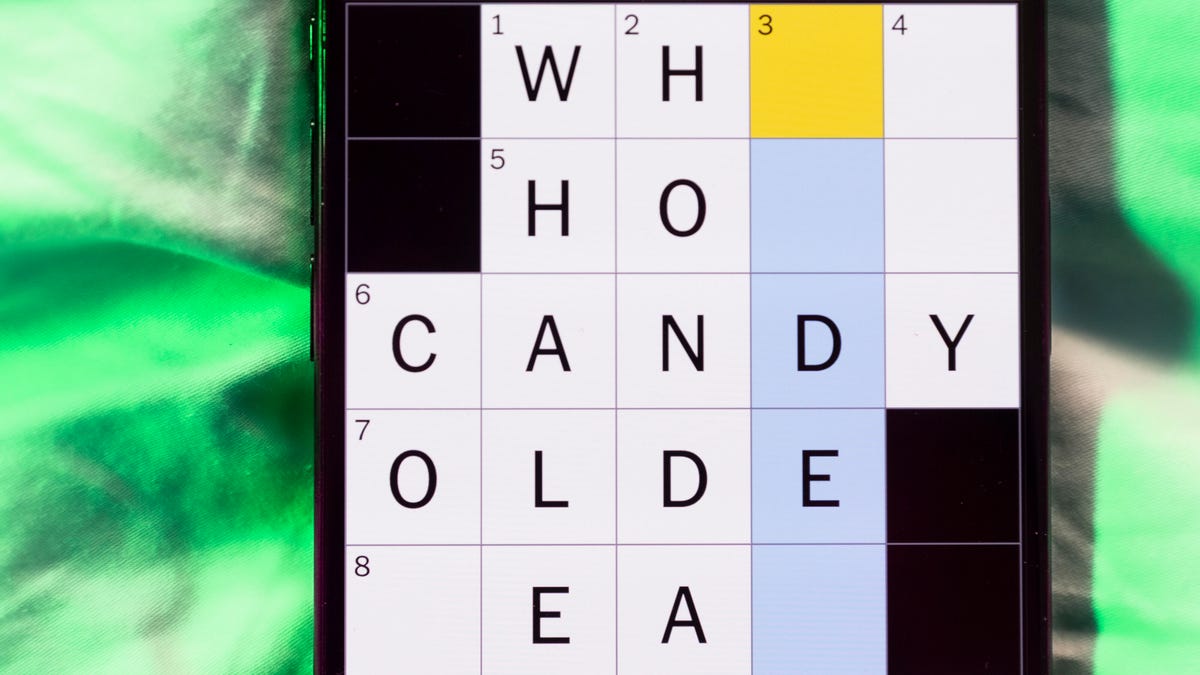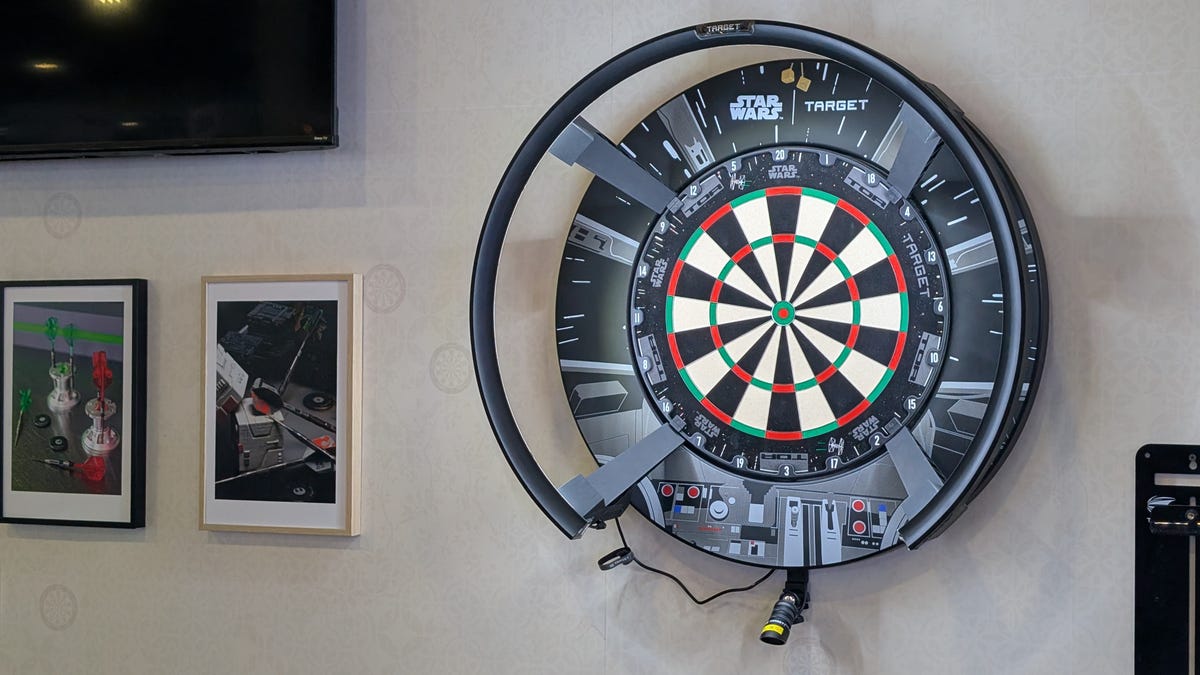Technologies
I Love GeForce Now on My Steam Deck — Until It Starts ‘Waiting for the Next Available Rig’
It was the first time I’d encountered it in the past week, but 20 to 45 minutes seems like an eternity when you have a console in your hands and are ready to play.

I started chair dancing when Nvidia told me about its GeForce Now cloud-gaming app for the Steam Deck. My Deck OLED is my most frequently used nonessential device, so I was stoked that GFN provided a way to play Xbox Game Pass Ultimate games on it. And it was great, even on my pretty uneven Wi-Fi connection, until it started tossing me into queues with up to 40 people ahead of me. And that was on Ultimate, the priciest tier with the shortest wait times and longest sessions.
It was a blip in my otherwise great experience during the past week — relatively glitch-free, low-latency gameplay, including when attached to a monitor with a hub for keyboard and mouse — and it cleared up later in the day, but it was a frustrating blip nonetheless. (I contacted Nvidia, but the company didn’t have an explanation like «East Coast servers down for maintenance!» at the ready.) It’s something people on the Premium and free plans might experience, though, so it merits discussion.
And yet, it’s still less glitchy and frustrating than Xbox Cloud Gaming. Sigh.
To me, the Game Pass support is the most important feature because a lot of Xbox Cloud gameplay is really erratic for me on my mobile devices. To Nvidia, battery life is most important, I suspect partly because it’s critical and quantifiable.
And yes, the Deck can last much longer — I’d say I get a couple more hours out of it — because it takes a lot less power to run the game in the cloud and stream to you than it does to run locally, which requires a lot more processing to run and render the games. That said, I also tested the app on the Lenovo Go S SteamOS model (which I’m working on a review of and otherwise really like), and that, thus far, seems to have poorer battery life than the Deck, so it may become an important factor for me as well.
In general, even weighty games such as Doom: The Dark Ages and Clair Obscur Expedition 33 (the first from Game Pass, the second Steam) played zippily (60-plus fps) on a monitor at Epic/Ultra/whatever quality presets, although I didn’t get a chance to test HDR. Platformers like Have a Nice Death (Steam) seemed equally responsive and relatively latency-free compared with running locally.
The app provides extensive, or more compact, statistics if you want, but even shrunk down, they take up a relatively large amount of (sometimes critical) real estate on the Deck’s small screen. On the flip side, the icon indicating a Wi-Fi bandwidth issue is tiny and easy to miss. While GFN occasionally gave me network warnings, which I’m used to, it never seemed to result in more than the occasional stutter.
I do find that after about an hour in most games — especially my current addiction, The Blue Prince (see above re: Game Pass) — my connection gets wonky enough that some games become bogged down until they become pretty unresponsive and unplayable. GFN seems to provide the most consistency, although I did get dizzy once from buffered camera rotations racing around the screen to catch up with my stick movement.
I have a few nitpicks about the implementation that aren’t really Nvidia’s fault. Installation requires switching to desktop mode, which I always forget to customize, so I can actually hit what I want in the touch interface. I have to look up how to switch every time. Installing only happens once, though, so it’s not really a big deal.
More long-term annoying is the app’s relegation to the Non-Steam Games section of your library, combined with the absence of any content on its screen. GFN also has its own overlay and doesn’t provide any statistics, such as how many hours you played a given game for, in its interface, even aggregated for GeForce Now use. All the info is in there, but not always where you expect or want it. As a whole, these make the GFN experience feel disconnected.
Note that for free or even Premium plans, your mileage may vary because they run on lower-end GPUs rather than the GeForce RTX 4080-class versions. And you’re still restricted to games GFN supports, which is a fraction of the games universe. But it’s still a great way to play games on the Deck, especially non-Steam games, if you have one.
Technologies
Today’s NYT Mini Crossword Answers for Friday, Jan. 9
Here are the answers for The New York Times Mini Crossword for Jan. 9.

Looking for the most recent Mini Crossword answer? Click here for today’s Mini Crossword hints, as well as our daily answers and hints for The New York Times Wordle, Strands, Connections and Connections: Sports Edition puzzles.
Need some help with today’s Mini Crossword? The Across clues were kind of tough today. Read on for all the answers. And if you could use some hints and guidance for daily solving, check out our Mini Crossword tips.
If you’re looking for today’s Wordle, Connections, Connections: Sports Edition and Strands answers, you can visit CNET’s NYT puzzle hints page.
Read more: Tips and Tricks for Solving The New York Times Mini Crossword
Let’s get to those Mini Crossword clues and answers.
Mini across clues and answers
1A clue: Question in a late-night text
Answer: YOUUP
6A clue: Plentiful
Answer: AMPLE
7A clue: Saint ___ and Nevis (Caribbean nation)
Answer: KITTS
8A clue: Baby-bringing bird
Answer: STORK
9A clue: Take care of the tab
Answer: PAY
Mini down clues and answers
1D clue: Himalayan herbivores
Answer: YAKS
2D clue: Fail to include
Answer: OMIT
3D clue: «High five!»
Answer: UPTOP
4D clue: The «U» of UV rays
Answer: ULTRA
5D clue: Annoying to deal with
Answer: PESKY
Don’t miss any of our unbiased tech content and lab-based reviews. Add CNET as a preferred Google source.
Technologies
I Got Up Close and Personal With Boston Dynamics’ New Atlas Robot
Before Atlas takes its first steps into the world of work later this year, I found myself face-to-face with CES 2026’s most talked-about robot on the show floor.

When I say that I went hands-on with the new Boston Dynamics Atlas robot, I mean that I actually held hands with it. This humanoid robot, which CNET just awarded the Best Robot of CES Award, is one of the most advanced in the world, and I couldn’t pass up the opportunity to get up close and personal with it.
This product version of the robot, which is set to be shipped to Hyundai factories imminently to start working, has been the talk of CES this year. The specific Atlas robot I encountered was a static model that wasn’t turned on or fully operational. Our interactions were, therefore, sadly one-sided. Still, I ran my hands over its soft-touch plastic shell and gently prodded at its finger joints, wondering how it would feel if they gripped me back.
People tend to have varying feelings about humanoid robots — understandable given that they are built to some degree in our image, while also usually being stronger than us, with «brains» that we don’t fully understand. Atlas definitely evokes contradictory emotions for me — even more so when I stood face-to-face with it.
I’m in awe of the engineering, a little fearful of its capabilities, hesitant about what it could mean for the future of humanity and charmed by its design and styling. The periwinkle blue iteration of Atlas that I met on the show floor at CES 2026 almost bears more resemblance to a Dyson product than it does the industrial robots that defined Boston Dynamics’ early days, when it was best known for its work with DARPA.
«There’s a lot of really specific things about this robot that probably look a little weird,» said Zachary Jackowski, Boston Dynamics VP and general manager of Atlas. He pointed to the legs, which he described as «like nothing anyone else was doing.»
Atlas’ thighs are narrow set and in line with the torso, while the calves are wider set, attached to their upper counterparts with a circular joint. This robot is, in fact, all subtle curves and soft lines. There are no harsh edges or stark angles.
During a year when CES has been flooded with humanoid robots, Atlas definitely does stand out due to its design. It appears both less classically human and less industrial than some of its peers, while also lacking the often intimidating, featureless faces they tend to exhibit. Instead, it has two low-set cameras resembling eyes placed where you’d usually expect a mouth to be. Its face is a perfect flat circle, defined by an LED halo that gives it a somewhat Pixar lamp effect.
I asked Jackowski why Boston Dynamics decided to skew so relatively unhuman with this version of its humanoid. «Well, it’s not a human,» he said. «It projects the wrong first impression about a robot to have it pretend to be something that it’s not.»
Particularly in the early days of humanoids, he added, robots won’t have anything like human-like intelligence. People should look at it and see it for what it is — a tool for performing tasks safely and efficiently.
In fact, most of the design decisions were made to keep Atlas as simple, scalable and safe as possible, Jackowski said. I remark that there’s some irony in thinking of a humanoid robot as simple, given the complexity of the technology and development process to bring Atlas to life.
The key to making it simple, Jackowski said, is having a strong enough grasp of the technology to «accomplish the complex thing of building a humanoid robot,» but then being able to take it apart and understand that you can use fewer computers and actuators in it while achieving the same results.
And it’s essential to Boston Dynamics that Atlas is perceived as simple. After all, it’s a general-purpose humanoid, which might eventually be sent far and wide to fulfil all manner of roles. Jackowski calls it the «ultimate generalist.»
Simplicity aside, there are aspects of Atlas that Jackowski believes set it apart from other humanoids at the show. «The repairability of this robot is crazy good,» he said. «The runtime is crazy good. The strength is unlike anything.»
From working in Hyundai’s manufacturing plants, Atlas’s job trajectory is to eventually graduate to many of the same industrial environments where Boston Dynamics’ Spot robot works, before moving to bussing tables in the service industry and eventually into the home. The robot will evolve between now and then, Jackowski said. However, this could be an early glimpse of the type of humanoid that will eventually be our housemate.
That’s some way away, though, which is probably for the best. As I gaze up at Atlas, which I’d guess is around the same height as my husband, my feeling is that, however impressive Atlas is, I’m still not ready for it to move in.
Technologies
This Star Wars Dartboard Has a Secret That Will Stop You From Using the Force to Win
This cool dartboard has cameras to track your score and keep you honest

Right in the middle of the high-tech show floor at CES 2026 sits a pub called the Bull and Barrel with some of the coolest dartboards I’ve seen. Target Darts was showcasing its collaboration with both Star Wars and Xbox. Darts may not be for everyone, but I love «shooting some arrows» in my basement with the family. I also love anything Star Wars themed, so these tick a lot of boxes.
The basic Star Wars set comes with a branded board and wall protector that resembles the cockpit of the Millennium Falcon and costs $200. The board is of very high quality, with a tight-knit sisal fiber face, and the protector is thick enough to keep stray shots out of your drywall. The graphics are cool too, with nods to the original Falcon and even have the gold dice hanging above.
The big tech twist to this board, though, is the Omni light ring around the outside. It uses four cameras to track your dart’s position, then sends that info to an app that keeps score. The scoreboard is crisp and clear and uses the voice of legendary darts announcer John McDonald to narrate your game. It’s pretty great to hear his voice announce my terrible scores.
The Omni also allows you to connect with other players worldwide via shared scoreboards. I love the idea of my dad having a board at his house or playing a match with me at my house. It adds a feeling of community to home darts that you don’t normally get outside a pub or bar.
The Omni is a much more expensive proposition than the Star Wars set, coming in at $650, but if you’re serious about the game and a Star Wars fan, it looks to be a great investment.
-

 Technologies3 года ago
Technologies3 года agoTech Companies Need to Be Held Accountable for Security, Experts Say
-

 Technologies3 года ago
Technologies3 года agoBest Handheld Game Console in 2023
-

 Technologies3 года ago
Technologies3 года agoTighten Up Your VR Game With the Best Head Straps for Quest 2
-

 Technologies4 года ago
Technologies4 года agoBlack Friday 2021: The best deals on TVs, headphones, kitchenware, and more
-

 Technologies4 года ago
Technologies4 года agoGoogle to require vaccinations as Silicon Valley rethinks return-to-office policies
-

 Technologies4 года ago
Technologies4 года agoVerum, Wickr and Threema: next generation secured messengers
-

 Technologies4 года ago
Technologies4 года agoOlivia Harlan Dekker for Verum Messenger
-

 Technologies4 года ago
Technologies4 года agoiPhone 13 event: How to watch Apple’s big announcement tomorrow
